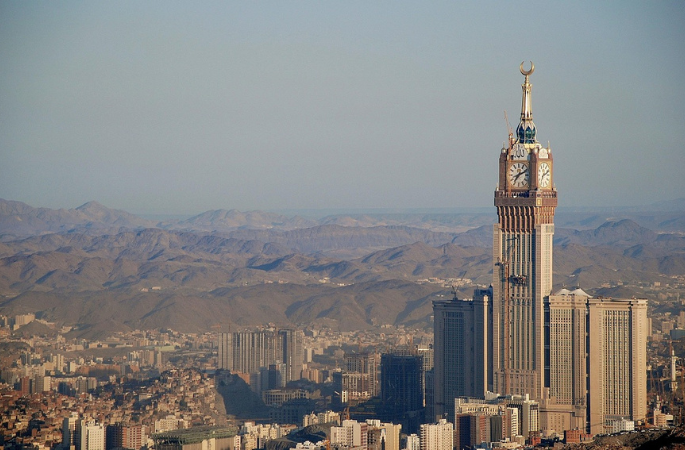When I moved to Saudi Arabia in the summer of 2024, I was in for a big surprise. The country revealed itself to me as a treasure trove of heritage architecture, beautiful handicrafts, rich local culture, and centuries-old history. A little digging around the internet told me that Saudi Arabia was home to eight UNESCO World Heritage Sites. Who would have thought!
For a country that had only recently opened to foreign tourists, eight UNESCO sites sounded like an anomaly. Yet that’s precisely what it was not. As I dug deeper into history books, I realised that Saudi Arabia had always been at the crossroads of civilizations because of its strategic location in the middle of ancient trading routes. In antiquity, the ancient Incense Route and, later, the Hajj Pilgrimage Route passed right through the heart of Saudi Arabia, bringing an abundance of goods, people and ideas. This, in turn, led to a beautiful intermixing of cultures that gave birth to new and innovative forms of art, architecture, and food that’s every heritage lover’s delight today.
Furthermore, Saudi Arabia is quite a large country, unlike its neighbours in the Middle East. Size is directly correlated with diversity, which is mind-boggling in Saudi Arabia. The landscapes, the food, the art and the architecture—everything is so different if you travel from north to the south or east to the west. This makes Saudi Arabia unique and highly appealing to travellers worldwide. Whether you wish to learn about a centuries-old art form, decipher prehistoric rock art in the desert, marvel at old towns, or visit rose farms, Saudi Arabia has lots to offer the heritage lover in you.
Al Qatt Al Asiri Art of Asir Region
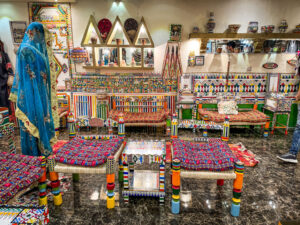
Al-Qatt Al-Asiri is an abstract art form that originated in the remote villages of Saudi Arabia’s Asir Mountains hundreds of years ago when women started painting the walls of their houses, especially the guest rooms or the “majlis,” with natural colours and spontaneous patterns. Over time, Al-Qatt became a defining element of the identity of Asiri women, who were recognised for their artistry and hired to decorate houses, sometimes in exchange for money or barter.
Listed as a UNESCO Intangible Cultural Heritage, Al-Qatt Al-Asiri is a dying art form with many existing art panels in dire need of repair. My first rendezvous with Al-Qatt Al-Asiri art was at the Fatima Museum of Asiri Heritage in Abha, a city in southern Saudi Arabia. The museum is run by Fatimah Faye’e Alalmai, a pioneer in the Al-Qatt space and features large panels of the art form and is an absolute delight to visit.
Prehistoric Rock Art in Jabal Ikmah and Jubbah
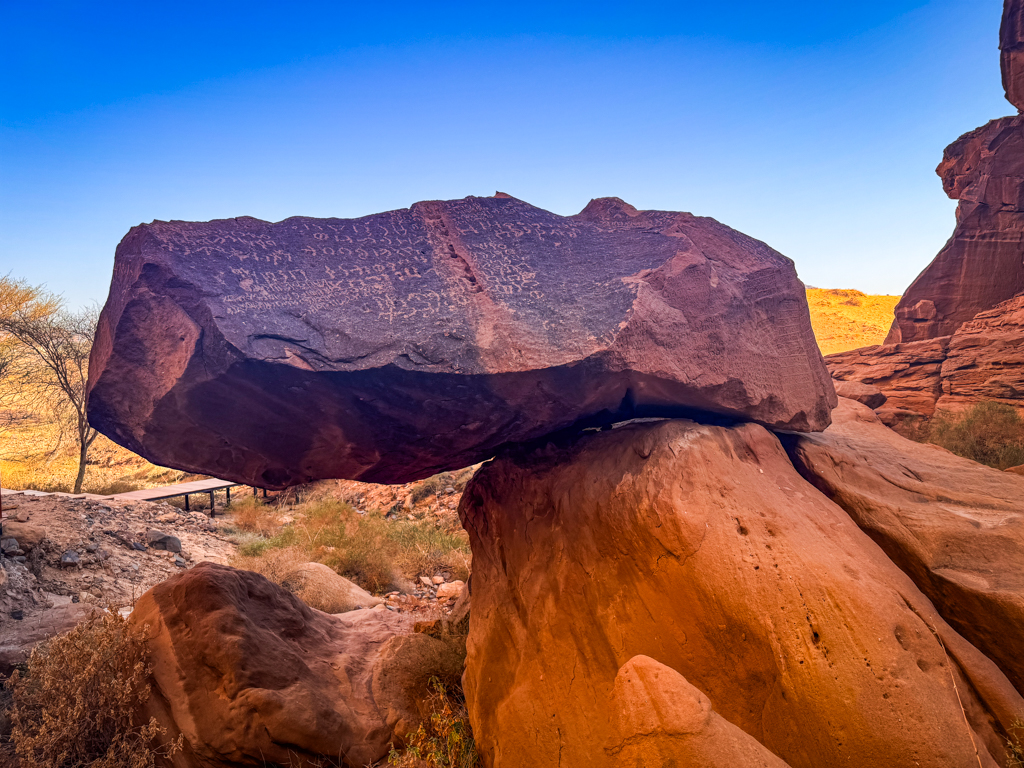
Saudi Arabia, because of its ancient history that dates to the Paleolithic and Neolithic ages, is also home to many collections of prehistoric rock art. Two of the most iconic rock art sites in Saudi Arabia are Jabal Ikmah in AlUla and Jabel Umm Sinman in Jubbah. Jabal or jabel translates to “mountain” in Arabic. The people who once traversed the mighty Arabian Desert have left their marks on these mountains in the form of prayers, rituals, images of birds and animals, memorials and descriptions of seasons.
“The carvings on these rocks are important because they give rich insights into the political, social and religious lives of the ancient people who inhabited these lands,” says Wedad Yaseen who works as a tour guide for the Royal Commission of AlUla in Saudi Arabia. “Deciphering these stories is an extremely enriching experience,” she adds.
Nabataean Tombs of Hegra
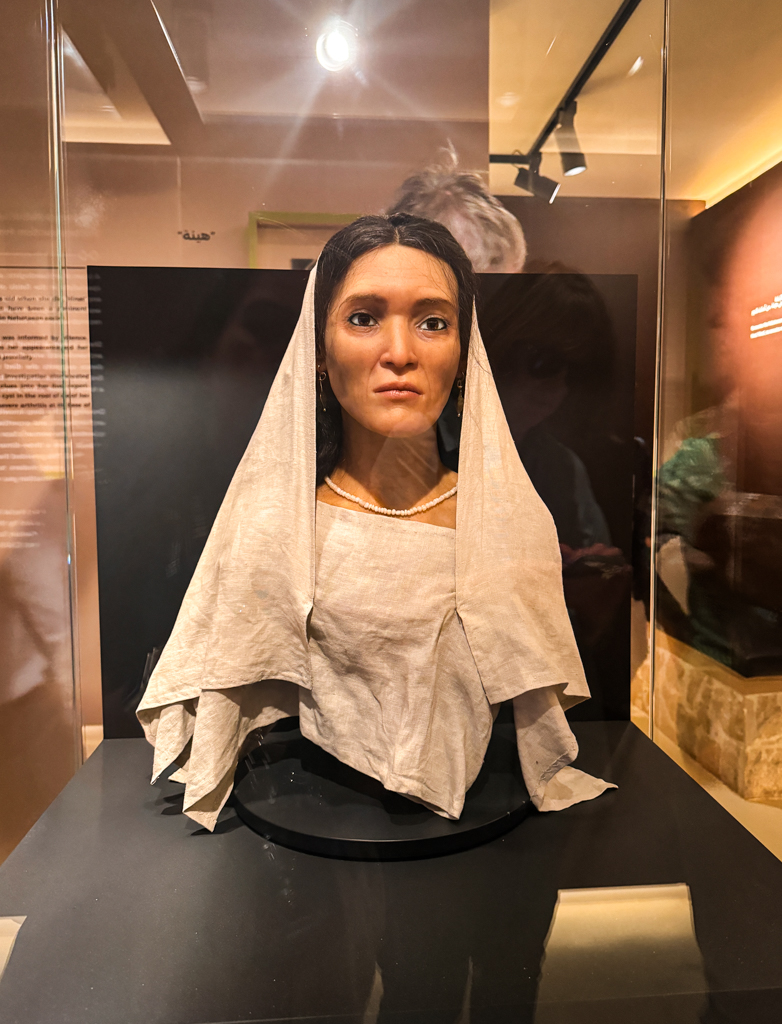
The ancient city of Hegra in AlUla is another beautiful historic site that was once an important trading town for the Nabataean Kingdom. Much like the Nabataean capital of Petra in Jordan, Hegra in Saudi Arabia is home to over 100 majestic rock-cut tombs from the 1st century. The most iconic among them is Qasr al Farid, or the Lonely Castle – a majestic tomb dedicated to a high-ranking Nabataean official.
At the Hegra Visitor Centre, you can see the lifelike reconstruction of Hinat, an elite Nabataean woman who lived in the 1st century. Hinat was one of the most powerful women of her time and had an entire tomb dedicated to herself.
Desert Kites and Mustatils of Khaybar
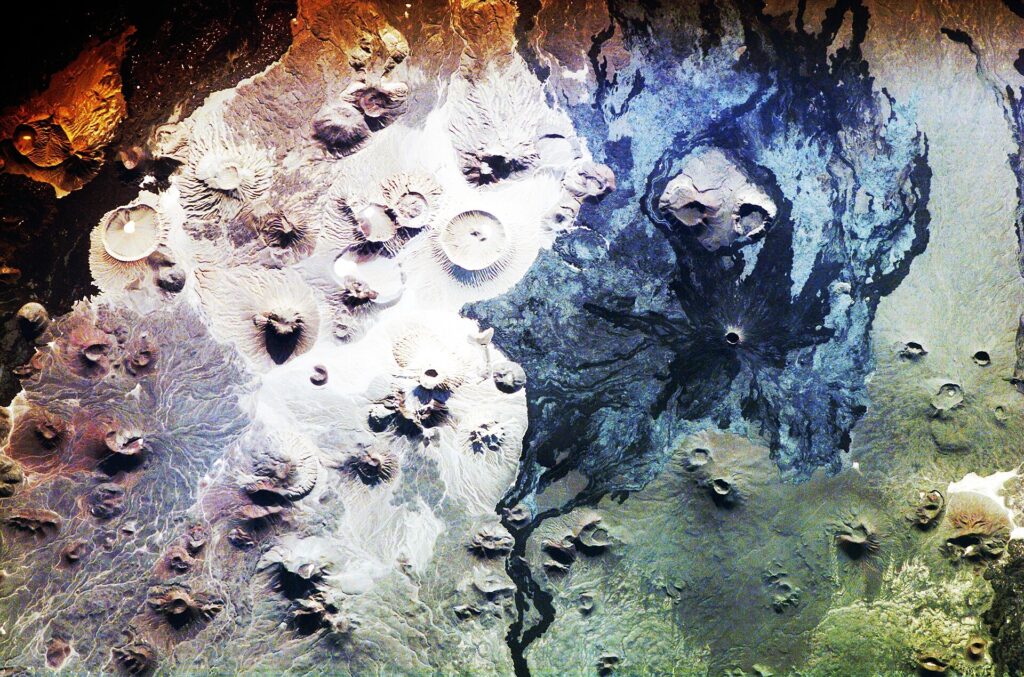
The ancient stone monoliths of Khaybar in northwestern Saudi Arabia are a true hidden gem.
Desert kites are dry stone structures that actually look like kites when seen from the sky. Even though their exact purpose is not known, it is believed that these ancient structures were used to trap animals for herding and hunting. It is estimated that there are nearly 1000 desert kites in and around Khaybar.
Mustatils, on the other hand, are massive rectangles built of monoliths stacked side by side. Even though it is still not known for sure what use the mustatils were, “there’s some preliminary evidence which suggests that ritual activities were practiced within these monuments,” write Dr Melissa Kennedy, Lecturer of Archaeology at the University of Sydney and her colleagues in their latest research paper. “These rituals are one of the earliest traditions of the pre-Islamic ritual landscape of Arabia,” they add.
Heritage Architecture of Old Jeddah
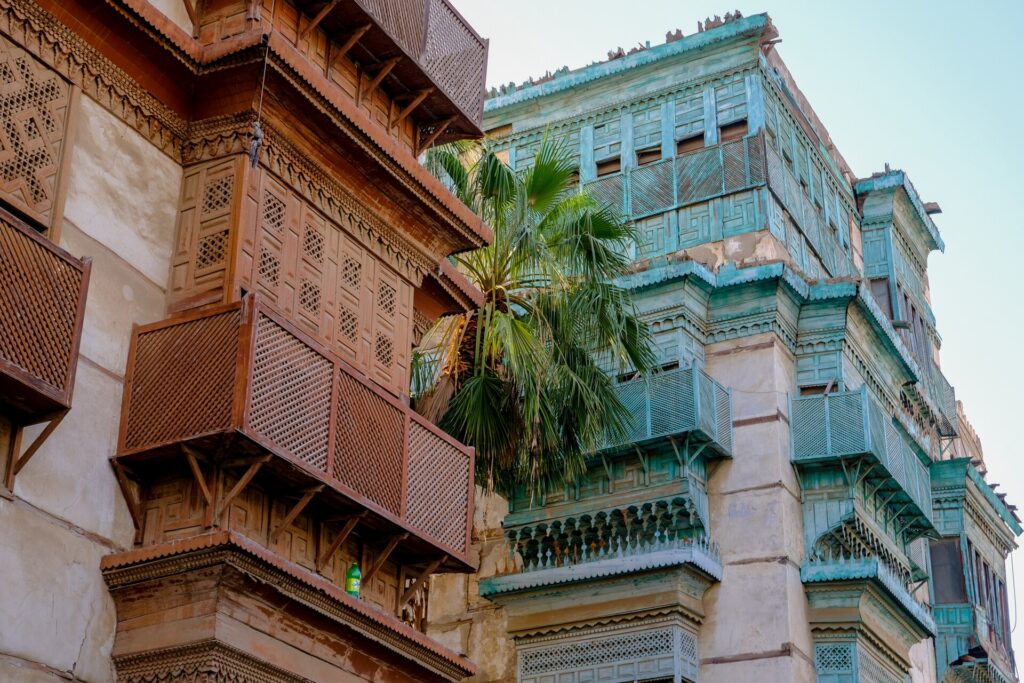
Architecture enthusiasts will enjoy a trip to Jeddah, the largest port city of Saudi Arabia.
The historic center of Jeddah, Al Balad, is chock-full of heritage mansions with distinctive designs. The hanging windows, or “rawasheens,” of these mansions, with their intricately designed woodwork, are especially striking.
Rose Farms of Taif
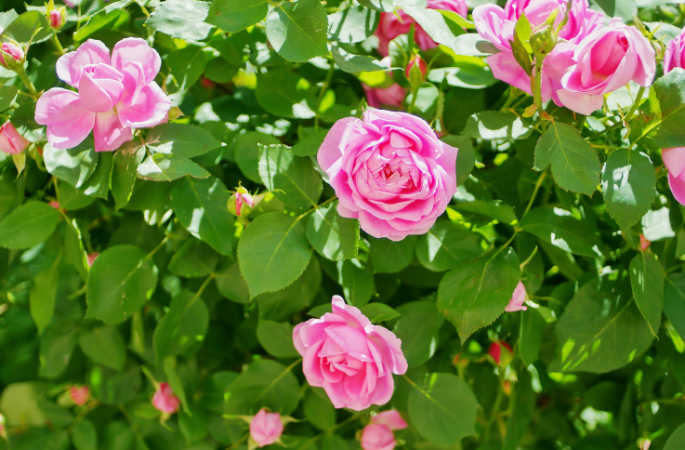
Although we might think that all of Saudi Arabia is a desert, it could not be further from the truth. A good part of western and southern Arabia is filled with gorgeous mountains and charming hilltop towns that are lush green and verdant.
One such town is Taif. Located in the Mecca Province, Taif is home to the famous Taif rose plants that bloom every spring. The cultural practices associated with roses such as pruning, harvesting and distilling are deeply intertwined with the heritage and identity of Taif’s residents and were recently added to UNESCO’s list of intangible cultural heritages.
Every year, Taif’s farmers prepare the land and prune the rose bushes from December to February. March–April is the harvest season when the whole city comes alive with the Taif Rose Festival. This is when markets are filled with flowers and the air is redolent with the sweet smell of the rose blooms.
Birth of Saudi Arabia in Diriyah
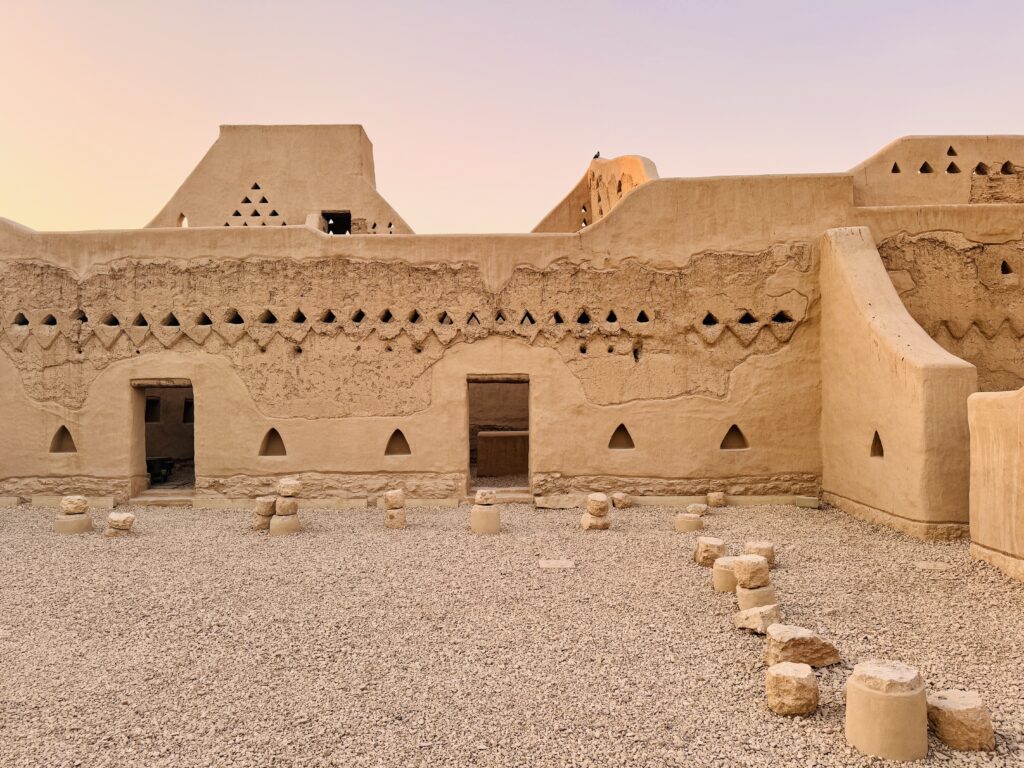
Located just 20 km northwest of Riyadh, the ancient city of Diriyah is where the modern Kingdom of Saudi Arabia was born. This old city was founded in 1446 AD and is a well-preserved example of stunning Najdi architecture consisting of mudbrick buildings and the iconic Najdi triangles.
As Saudi Arabia continues to open its doors to the world, there is no doubt that both heritage lovers and curious travellers will find endless inspiration and wonder in the landscapes and legacies of this diverse country. Whether exploring ancient tombs or immersing oneself in time-honoured art forms, the experience is sure to be enriching and unforgettable.

